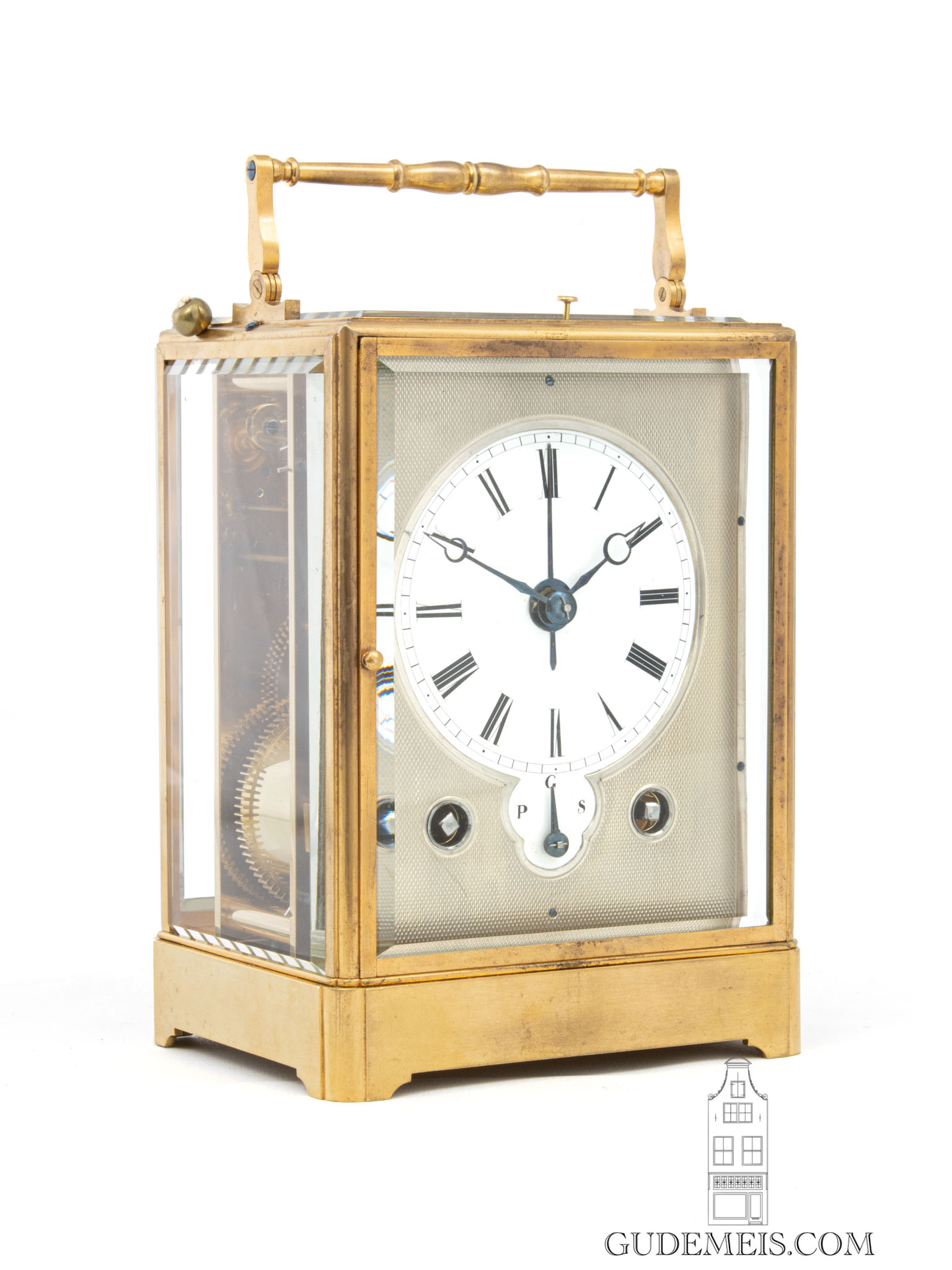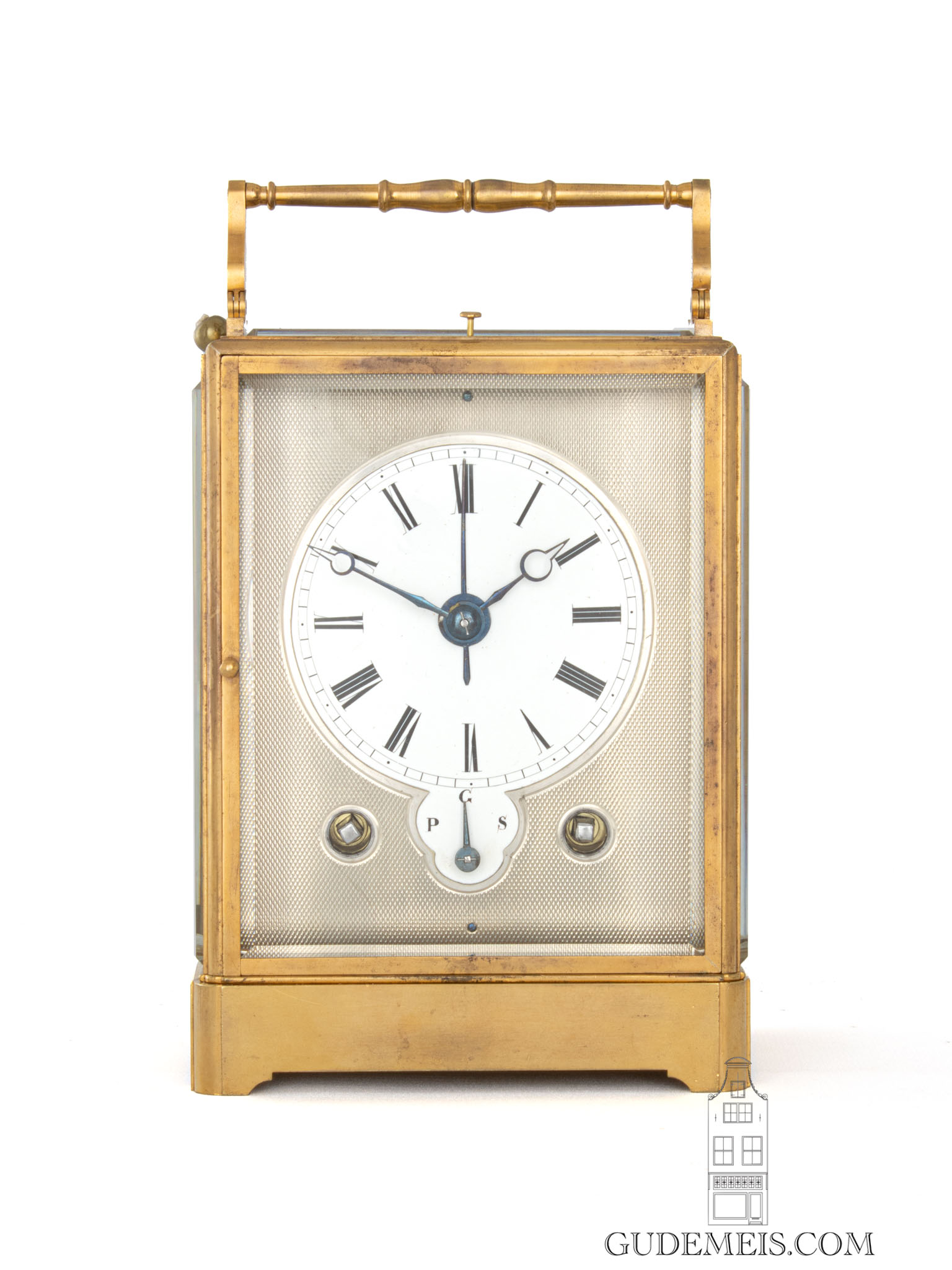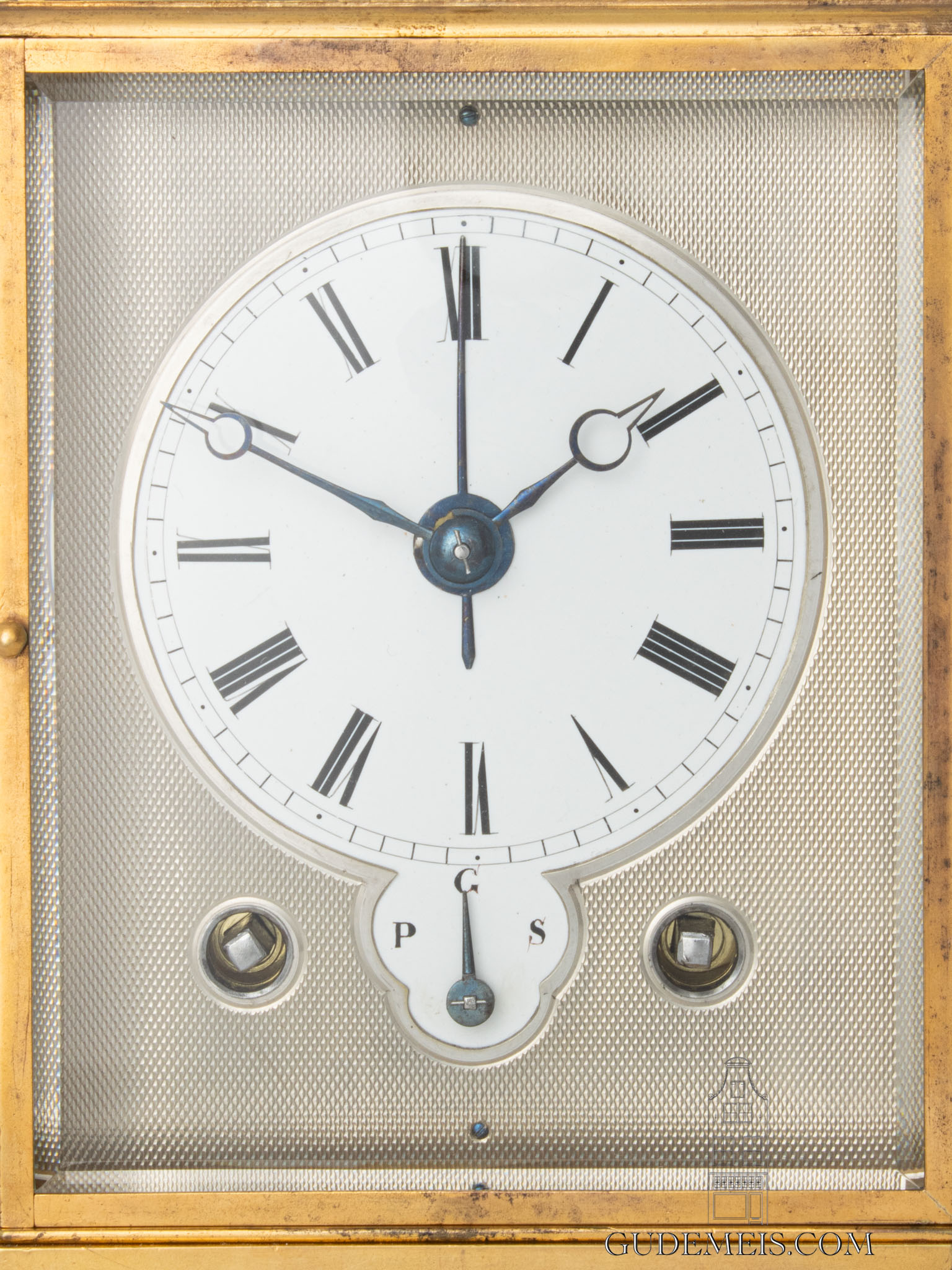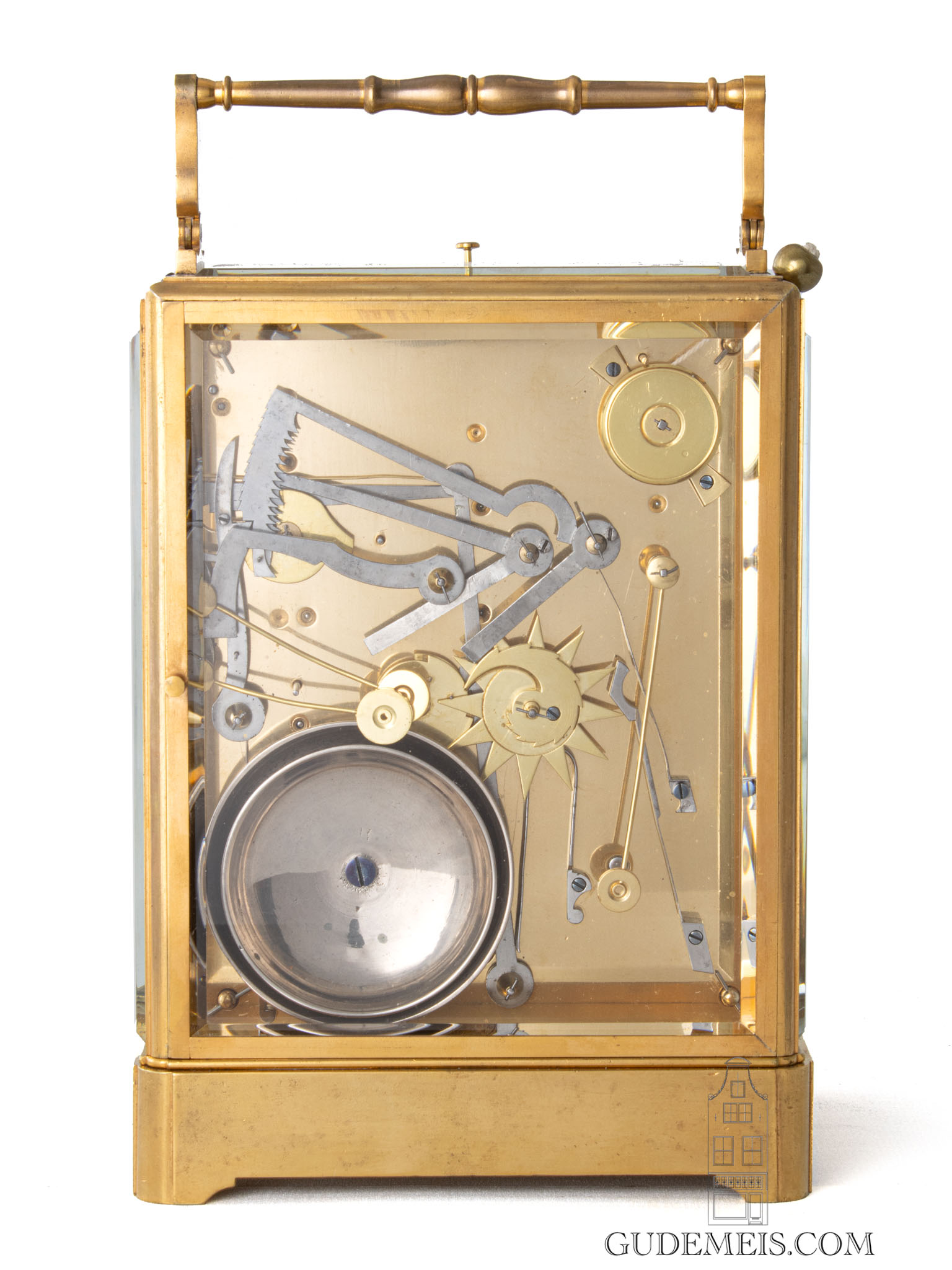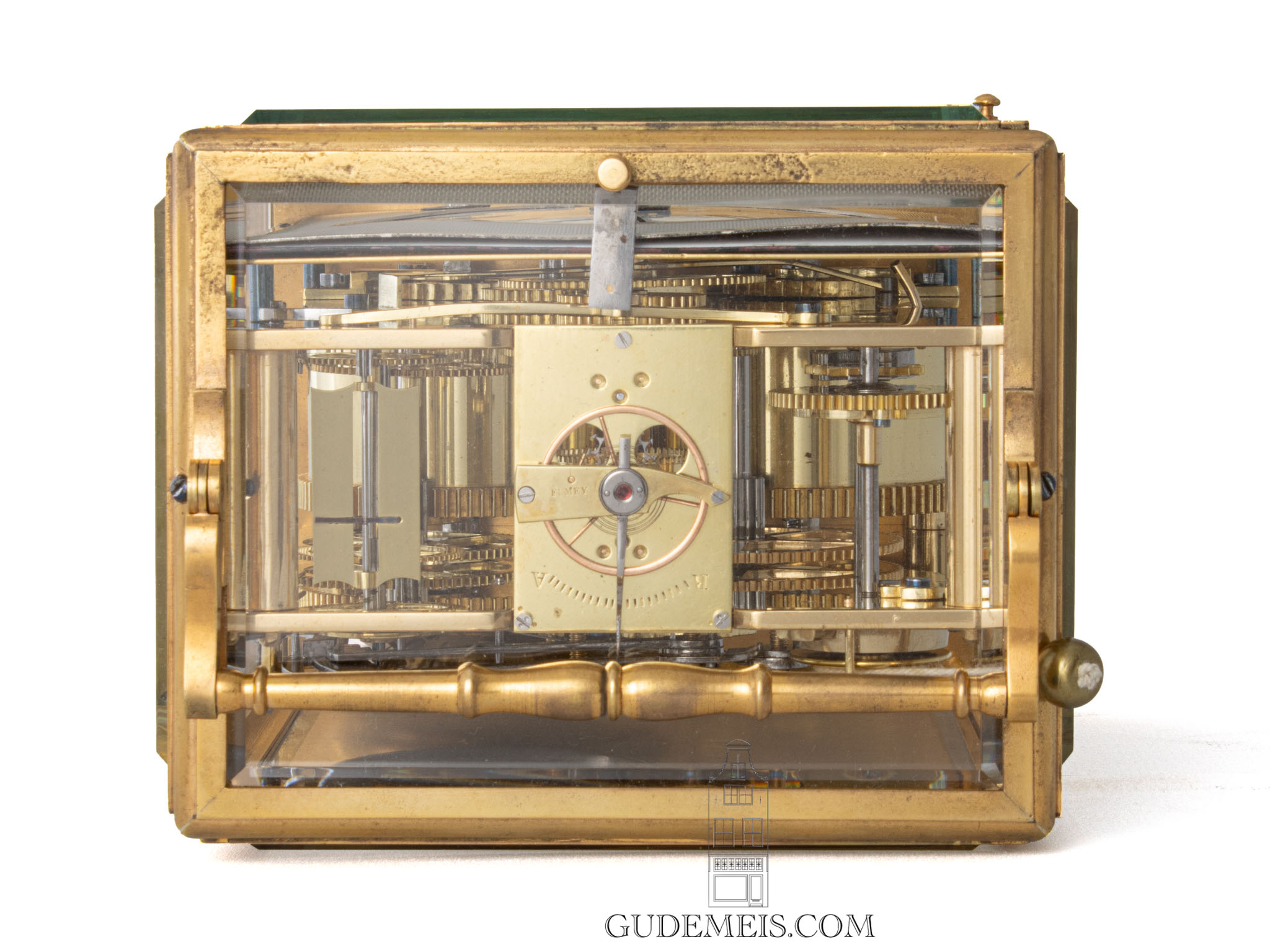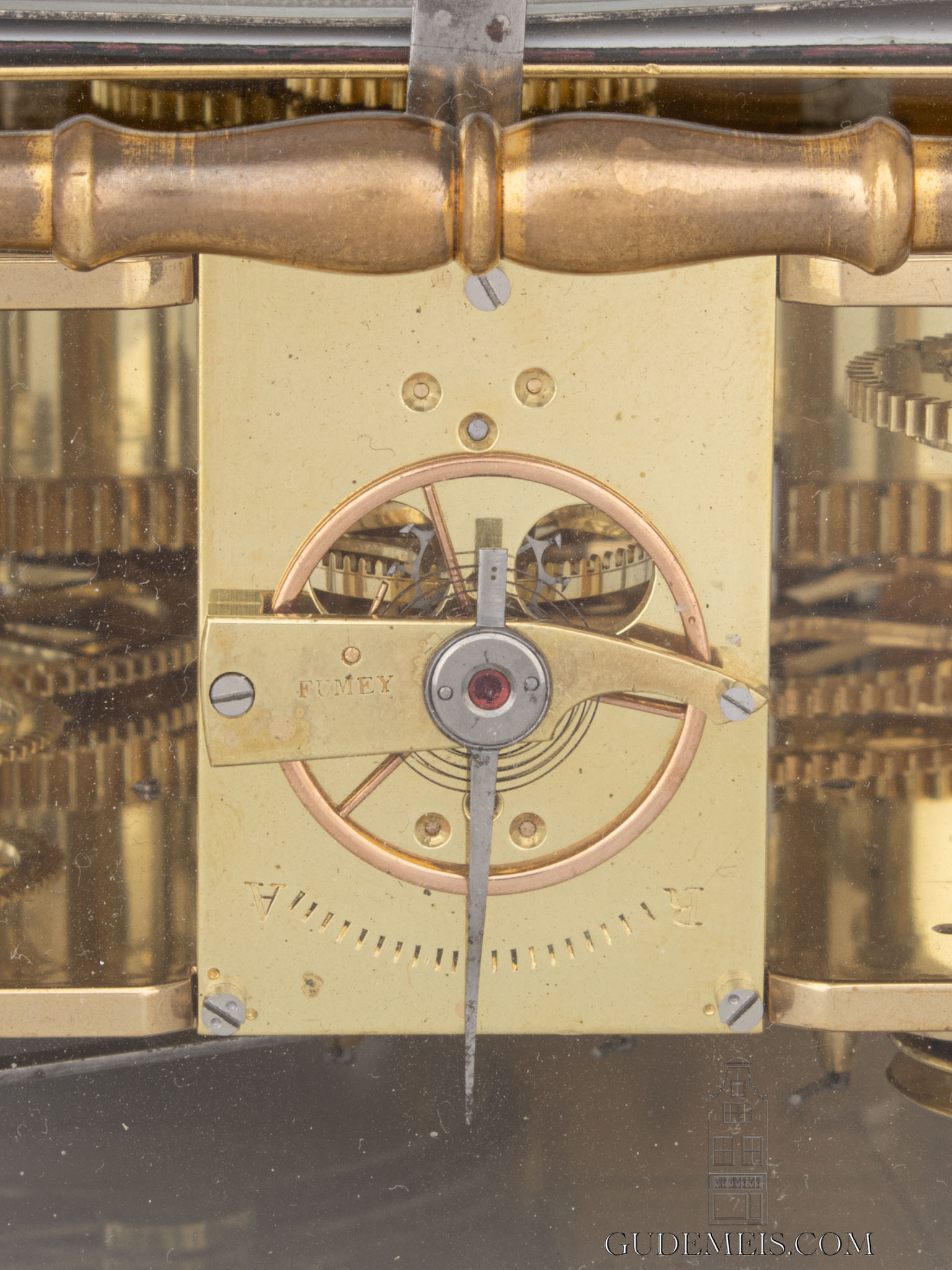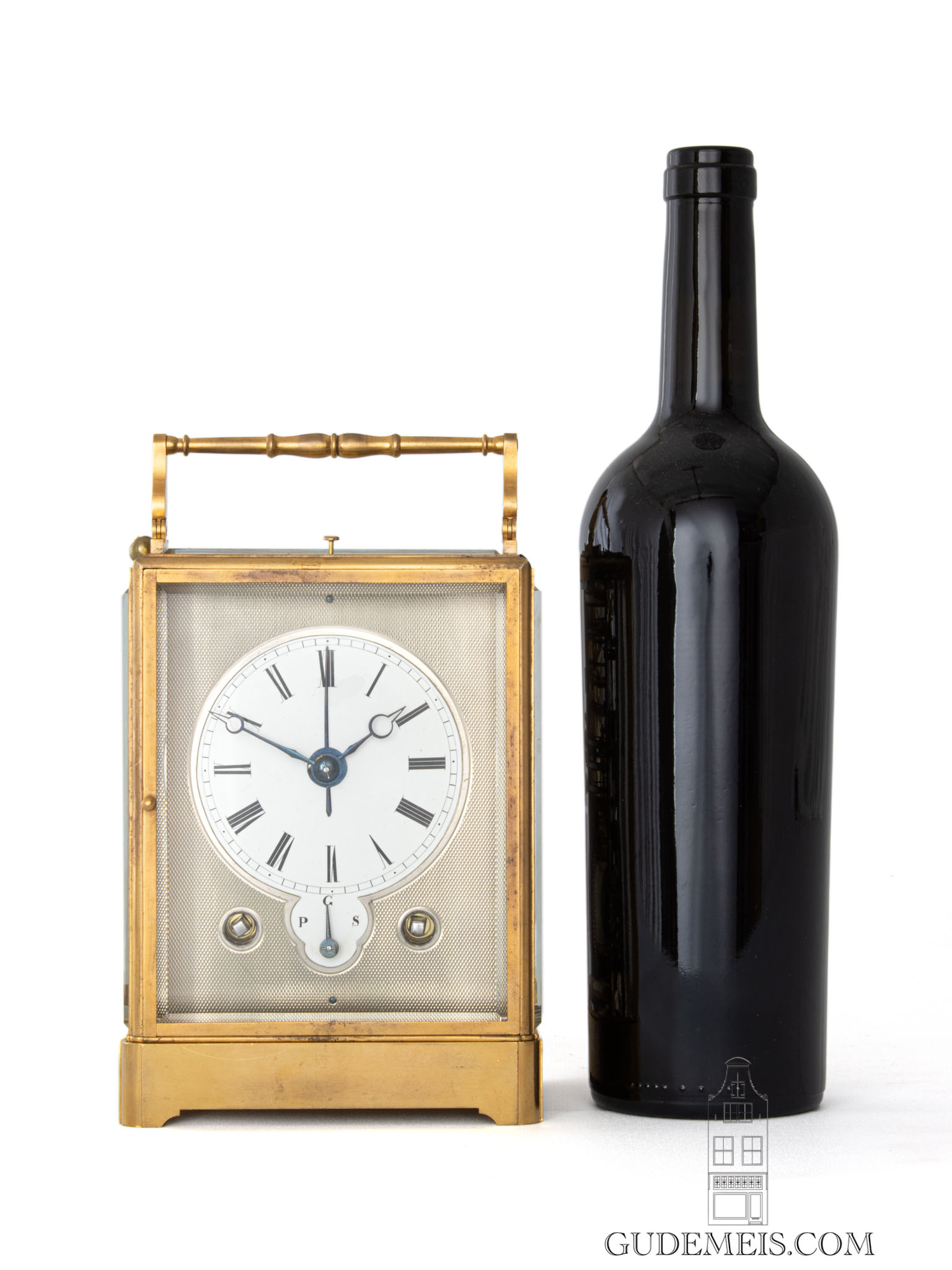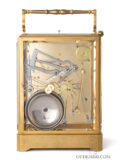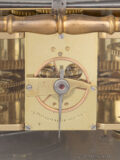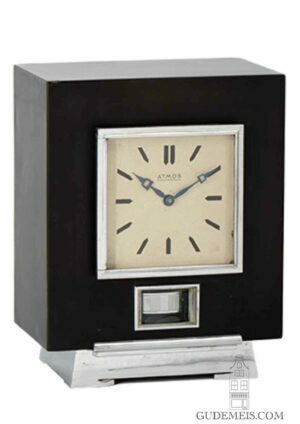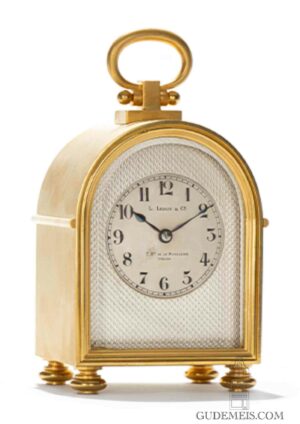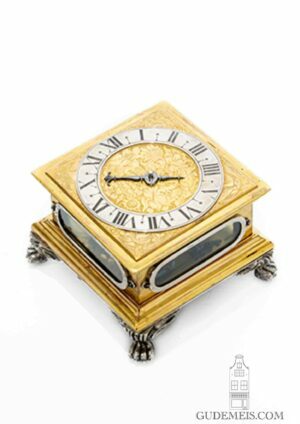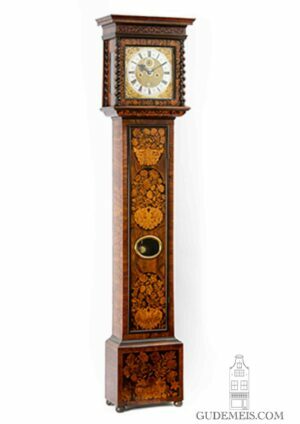A rare and large French one-piece grand sonnerie and alarm travel clock, Fumey, circa 1835
Description
Fumey
Already in the 17th Century there was a tradition in clockmaking in the Franche Comté, in the North-eastern part of France. The ‘Morbier clock’ or ‘Comtoise clock’ has its origins in this area. Later in the 18th and 19th Century there were pendules d’officier and Capucines made. The region is also known for the large scale production of ‘blanc roulants’, semi-finished movements that were i.e. sold to Paris where clockmakers finished these. In the early 1830’s it was Paul Garnier in Paris who introduced reasonably affordable travel clocks and with that opened up a whole new market. Some makers in the Franche Comté also tried to profit from this development and started to make carriage clocks. The case of this fine clock is very similar to the early clocks made by Garnier. Just as his clocks, this clock still needs to be wound from the front an early feature for this type of clock. Very different though is the way the movement is built which has much resemblance to that of the Capucines. Besides the construction of the movement, the quarter striking is unusual for this early period. Not only are there the option for Grand sonnerie, petite sonnerie and silence. There is also repetition and an alarm. The built of the movement places the clock in the North eastern part of France which is corroberated by the signature ‘Fumey’ which is on the escapement. The name belongs to a clockmaking family that worked in Foncine in the Jura.
Engine turned
The 8-cm enamel dial has Roman numerals. The Breguet hands and alarm hand are made of blued steel. Below the VI there is a subsidiary for the strike selection G (grand sonnerie), P (petite sonnerie), S (silence). The dial is fitted in a silvered engine turned mask.
Cylinder escapement
The substantial movement is driven by two spring barrels and has a duration of eight days. It is regulated by a platform cylinder escapement in combination with a plain balance. The balance cock is signed Fumey. The clock has grand sonnerie striking on two bells by means of rack striking. Repetition on demand. There is also a pull wind alarm which strikes on the larger bell.
One piece case
The gilt brass case consists of crisp moulded supports and styles of which the upper half are fixed together. This is why this type of case is called ‘one-piece’. This contrary to later multiple part cases of which the parts are fixed with screws. This clock is surmounted by a elegant folding carrying handle. There are doors to both front and back. The moulded base is raised on flat bracket feet.
(In the book by Derek Roberts; Carriage- and other travelling clocks, in the chapter ‘Earlier carriage clocks’ there is a clock depicted with a similar movement by this maker but in a different case on page 71.)
